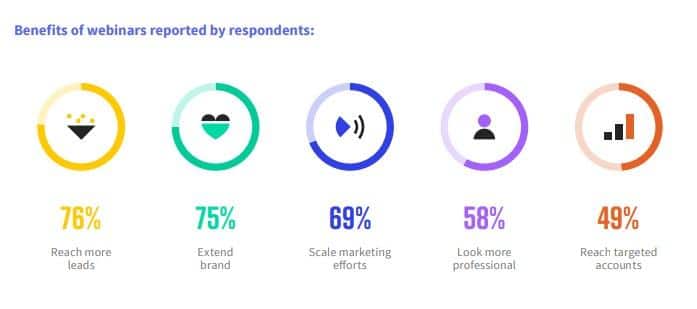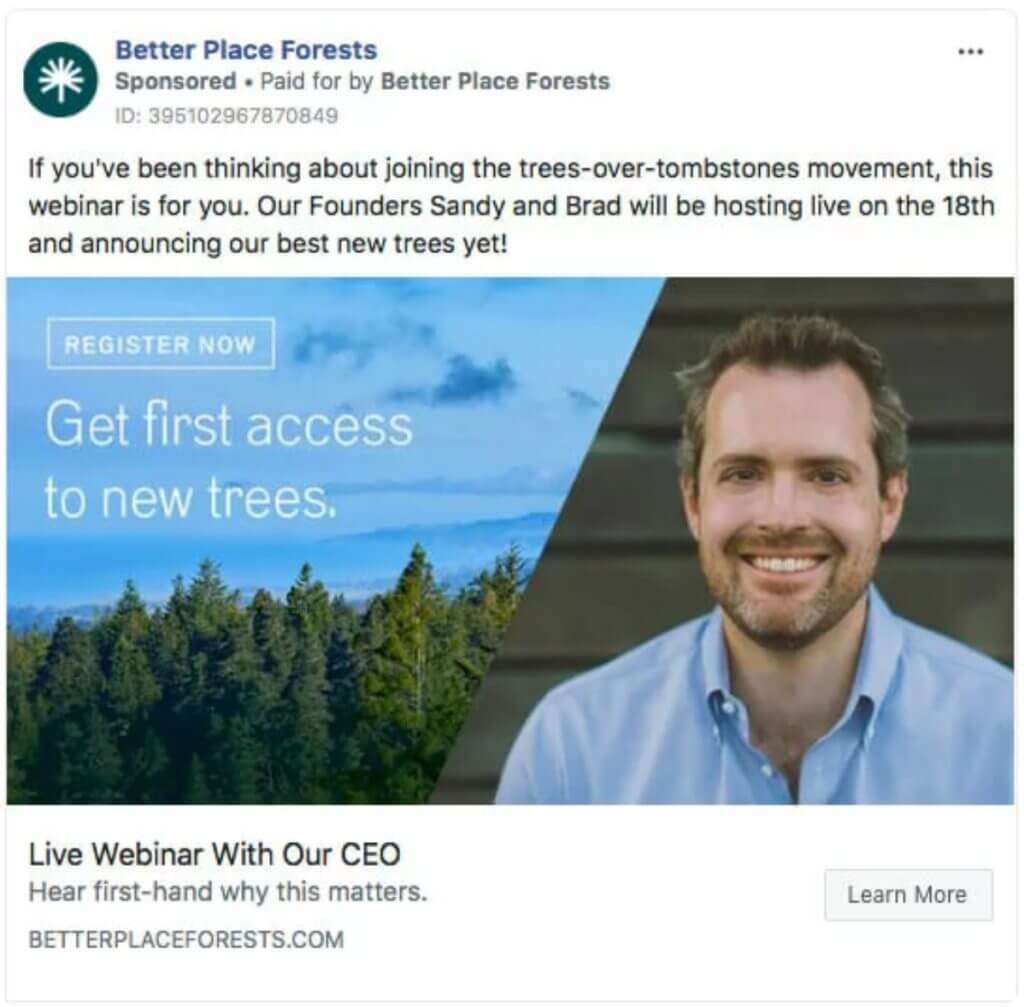The Webinar Marketing Template with Free Download [XLS]

There’s a good chance you spent more time consuming video content in the last two years than ever before — and you’re hardly alone. Video marketing is having a real moment in the sun in 2021, with viewership of B2B webinars and similar online events increasing by ten percentage points over last year.
For B2B sellers, webinars can be particularly effective, especially at the top of the sales funnel (TOFU), where participating in a webinar can entice 62% of buyers to request a product demo. To achieve such results, you have to market your content right and to promote webinars to your audience exactly at the right time.
The concept of a “webinar” has expanded in recent years, but still carries certain expectations about the content’s informative nature and how it will be delivered. To put together webinars that answer your audience’s questions and nurture their interest in your brand, you need to plan them out in a thoughtful and methodical way.
In the following, we’ll provide actionable tips on how to make and market an effective webinar. We’ll also give you a free, downloadable webinar marketing template that includes every step to make your webinar a success.
What is a webinar?
A seminar is a class or training session, typically held in a small group that allows everyone to participate and ask questions. Hold a seminar over the web, and it’s a webinar.
Webinars can introduce audiences to what your product does and how it works, or provide instruction for beginning, intermediate, and advanced users. In addition to generating and nurturing leads, webinars can help you strengthen your brand authority and maintain customer loyalty over time.
As a vehicle for delivering marketing content, webinars straddle two categories: video marketing and event marketing. On the one hand, video is the medium of choice for webinar delivery. For most sellers, it makes sense to offer webinars on-demand videos at any time. On the other hand, it can also be helpful to think of a webinar as an event, and not just as a content deliverable.
Why webinars and why now?
During the pandemic, many industries had to shift their in-person networking and knowledge-sharing events to online venues. Whether it’s streamed live or offered as a prerecorded video after the fact, a good webinar can bring experts and insightful personalities together in a format that’s relevant and accessible to your potential buyers.
For a long time, the limitations of technology and bandwidth hindered video’s true potential online. Now, high-resolution video is here, and users have gotten much more comfortable with virtual events substituting for in-person meetups. A recent survey by ON24 reveals some of the numbers behind the ascendancy of the webinar:
- Registration for webinars increased by 162% during the past year.
- Webinar attendance nearly quadrupled, surpassing 60 million people.
- Webinars were the best channel for creating qualified sales leads, according to 89% of marketers.
- On-demand webinars were watched exclusively by 43% of attendees, decreasing the live viewership-only percentage by four points.
Audiences may already be showing some signs of burnout on virtual events, but the webinar is likely to stick around, and here’s why. Webinars are a way to offer training, instruction, and in-depth knowledge in a proven format without the overhead or logistical hassles of an in-person event.

They can also serve as a vital part of an inbound sales strategy, providing leads with detailed answers to their questions that will allow them to advance to the next stage of the purchasing journey.
How to Market Your Webinar
A webinar isn’t a short, easily-consumed bit of content. Registering, attending, and engaging with an entire webinar is a significant commitment of time and attention for your buyers. To gain the benefits of a webinar as an integral part of your marketing strategy, you first need to market the webinar to its potential audience properly.
Here are five best-practices tips to get you started:
1. Identify Your Audience
Understanding your audience will tell you a lot about how to set the tone, aesthetic, and presentation style for your webinar, where to advertise it, and what topics need to be covered. The best way to do this is to gather customer data through surveys and other forms of feedback. Then, use the data to create detailed customer personas so you can accurately strategize ways to reach the real people you’re trying to attract to your webinars.
2. Pick an Engaging Topic
By creating buyer personas, you can identify the needs and pain points that motivate your audience and develop webinar topics that address them. The best, most engaging topics will be those that help your audience solve some kind of problem they’re having. The webinar format is ideal for touching on the wider context and related challenges associated with your field.
3. Create a Webinar Agenda
To create a webinar agenda, you first need to thoroughly research the topic, then determine the scope of the information you want to deliver. Next, break it down into sections, and then arrange it so that it flows in a logical and comprehensible way. This will make it easier for the audience to follow along and ensure that you deliver all the essential information to educate them about your chosen topic.
4. Promote It on Your Website
No hard and fast rule that says webinars are for inbound marketing only, but they make a natural fit together. Webinars make good TOFU content, but they still appeal mostly to leads who already have some interest in your product. Upcoming webinars should be highlighted on your homepage and company blog for visitors to see upon arrival. If a webinar is being planned as a major online event, creating a special subsite and landing page for it often makes sense.
5. Promote It with Online Ads

If you’ve built good customer personas, targeted online ads can be a great way to reach people who need to see your webinars. Social media offers some of the most cost-effective ways to reach highly segmented audiences. Advertising on LinkedIn is practically a must for B2B sellers, but it may be wise to advertise in industry and trade publications too. Use ads to meet your target audience where they hang out online, right in their news feed.
How to Use the Template
Our free, downloadable Webinar Marketing Template can be used to plan out a webinar, execute it on its scheduled date, and follow up on it afterward.
The first page explains what you’ll find on the template and how to use it. It also includes space for you to detail your target audience and webinar objectives.
On the second page, you’ll find a checklist for all the things you need to do ahead of time, with sections arranged in chronological order as you get closer to the webinar date.
The third page contains the checklist for the day of the webinar: everything that needs to be done immediately before the webinar and during the webinar to keep you on point.
The fourth page is where you’ll find the post-webinar checklist. This list outlines the steps you can take to follow up with your attendees and make sure your recorded webinar content continues to serve your marketing needs.
The Right Webinar Can Drive Sales
Video content rules right now, but B2B buyers aren’t looking for flash and spectacle. They need substantive, in-depth information solutions to make their critical purchasing decisions. Webinars can serve as one of the most effective and appropriate conduits for longer video content oriented toward education and problem-solving.
For serious buyers, prerecorded webinars can be ideal TOFU content. B2B buyers need detailed knowledge about how your products and services can address the challenges they’re facing at the top of the sales funnel.
However, if they’re still at the point of conducting independent research, it can be daunting to get them registered for live events. An excellent way to encourage registration is to use attribution-based marketing tools that map out the buyer journey to enable more accurate personalization. Then, you can push content from your webinar library to the buyers who need to see it the most – and viewing the right webinar at the right time will help drive your B2B sales.